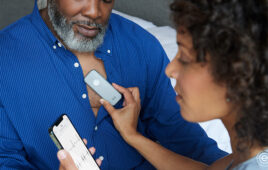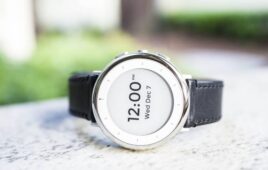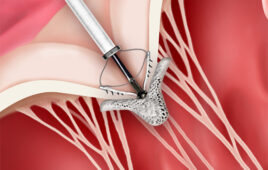FDA-Approved CPR RsQ Assist Makes It Easier for Anyone to Perform Hands-Only CPR
 Imagine having to perform CPR on a friend, loved one or stranger. One in four Americans say they’ve been in that situation, however most (70%) feel helpless to act during a cardiac emergency because they don’t know what to do, or their training has significantly lapsed. CPR RsQ Assist – introduced by CPR RsQ Assist, Inc. – is a first-of-its-kind, FDA-approved hands-only chest compression device designed to eliminate the intimidation factor of performing CPR.
Imagine having to perform CPR on a friend, loved one or stranger. One in four Americans say they’ve been in that situation, however most (70%) feel helpless to act during a cardiac emergency because they don’t know what to do, or their training has significantly lapsed. CPR RsQ Assist – introduced by CPR RsQ Assist, Inc. – is a first-of-its-kind, FDA-approved hands-only chest compression device designed to eliminate the intimidation factor of performing CPR.
The easy-to-use device guides you through the steps of performing effective CPR, and has been shown in independent clinical studies to reduce fatigue by 90 percent and increase performance results by 94.5 percent over traditional CPR.1
“This product complements the science behind hands-only CPR, and makes it easier to provide early, quality bystander CPR,” said Joe Hanson, inventor of CPR RsQ Assist. “It’s an essential safety device just like a fire extinguisher or smoke detector, which we hope will help save more lives following sudden cardiac arrest.”
What happens in the first two minutes following a cardiac event is critical to a person’s survival, and is usually in the hands of a bystander. The 2010 American Heart Association guidelines for hands-only CPR call for at least 100 chest compressions per minute for at least two minutes at a depth of at least two inches in the center of the victim’s chest. However, in the heat of the moment, it’s easy to forget where to place your hands and how quickly to do chest compressions. It’s also tiring, so as time passes, form and cadence can deteriorate as fatigue increases.
CPR RsQ Assist has easy-to-follow voice commands, along with an audio and visual metronome. It talks you through the steps of calling 911, placing the device in the center of the victim’s chest, and instructs you to push 100 times per minute until help arrives. To address fatigue, the product also has an ergonomic design with an easy-to-grip, non-slip handle. The design allows you to leverage upper body strength and weight as you push down, delivering quality compressions in the center of the chest, over minimal clothing if needed.
“The beauty of this product is its simplicity,” said Robert Tober, MD, FACEP and Collier County EMS Medical Director since 1979. “It takes the guesswork out of delivering CPR chest compressions, which keeps the blood flowing from the victim’s heart to the brain, and ultimately increases the sudden cardiac arrest victim’s chances of survival.”
CPR RsQ Assist is FDA-approved for use on people 8 years and older. It is an essential safety tool to keep at home, in the workplace, in the car, or anywhere where there are two or more people. The device is available with a custom-designed wall cabinet and signage for easy placement adjacent to an AED machine, so rescuers have easy access to both lifesaving devices. The current American Heart Association guidelines call for at least 100 chest compressions per minute for at least two minutes prior to using an AED machine.
1 Continuous-Chest Compression Cardiopulmonary Resuscitation for Cardiac Arrest Circulation. 2007:116:2894-2896.




